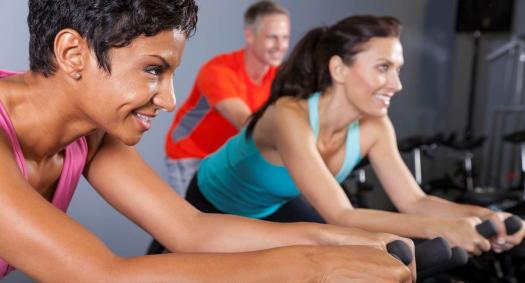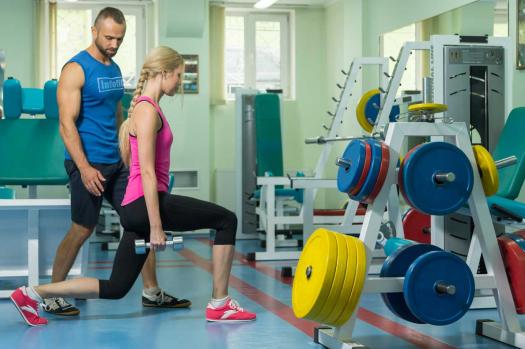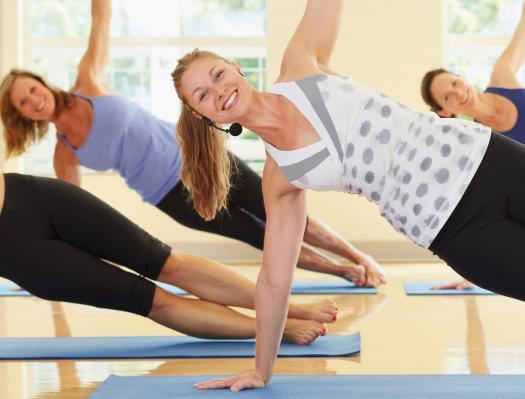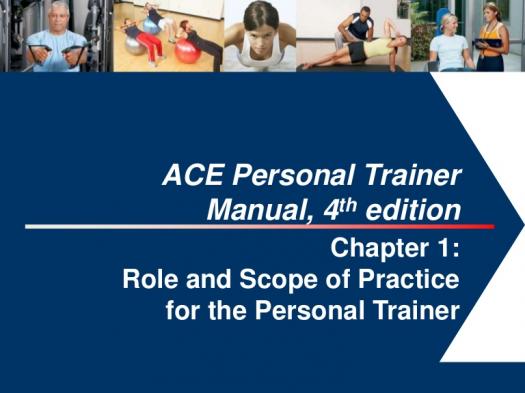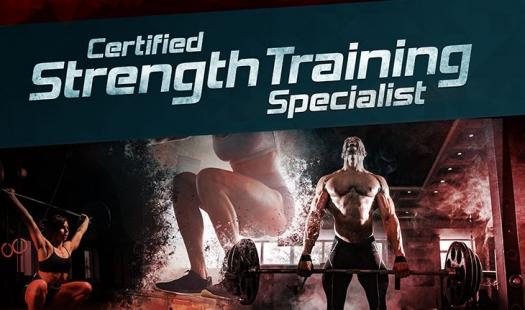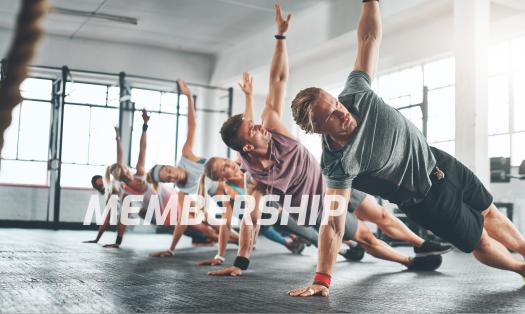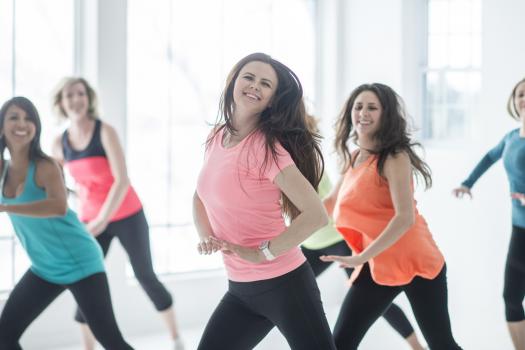Group Fitness Certification Test! Trivia Questions Quiz
(512).jpg)
Are you in the fitness field? Take this group fitness certification test and answer these trivia questions in the quiz. Welcome to the Group Fitness Certification Test! In this quiz, you will get to test out what you know about living a healthy life and, at the same time, ensuring that you get the most out of your fitness routine and the ones you teach to. Do give it a shot, and all the best as you practice for your fitness exams.
- 1.
Which of the subsequent options is MOST unlikely to change the heart rate when exercising and resting?
- A.
Smoker with 2 pack per day habit
- B.
Pregnancy
- C.
Osteoporosis
- D.
Pacemaker
Correct Answer
C. OsteoporosisExplanation
Osteoporosis is a condition characterized by weak and brittle bones, and it does not directly affect the heart rate. The other options, such as smoking, pregnancy, and having a pacemaker, can all have an impact on heart rate. Smoking can increase heart rate due to the effects of nicotine and other chemicals on the cardiovascular system. Pregnancy can cause an increase in heart rate due to the increased demand for oxygen and nutrients. Having a pacemaker can regulate and control the heart rate. Therefore, osteoporosis is the most unlikely option to change the heart rate when exercising and resting.Rate this question:
-
- 2.
Which of these diseases is less prevalent among the obese?
- A.
Cardiopulmonary conditions
- B.
Cancer
- C.
Diabetes
- D.
Osteoporosis
Correct Answer
D. OsteoporosisExplanation
Obesity is known to increase the risk of various health conditions, including cardiopulmonary conditions, cancer, and diabetes. However, osteoporosis is less prevalent among the obese. This is because excess weight and mechanical loading on the bones can actually have a positive effect on bone density, reducing the risk of osteoporosis. Therefore, obese individuals are less likely to develop osteoporosis compared to other diseases mentioned.Rate this question:
-
- 3.
Which of the following are the three stages of learning motor skills that are necessary for Group Fitness Instructors to understand?
- A.
Cognitive, Associative, Autonomous
- B.
Cognitive, Motor, Sensory
- C.
Learned, Assisted, Autonomous
- D.
Learned, Associative, Independent
Correct Answer
A. Cognitive, Associative, AutonomousExplanation
The three stages of learning motor skills that are necessary for Group Fitness Instructors to understand are cognitive, associative, and autonomous. In the cognitive stage, learners focus on understanding the task and developing mental strategies. In the associative stage, learners refine their skills through practice and feedback. In the autonomous stage, learners can perform the skill with little conscious effort and high proficiency. Understanding these stages helps instructors tailor their teaching methods and provide appropriate guidance to individuals at different skill levels.Rate this question:
-
- 4.
Which of the following is NOT one of the symptoms of stress fractures?
- A.
Severe muscle weakness
- B.
Pain at rest
- C.
Progressive pain that is worse with weight-bearing activity
- D.
Localized pain
Correct Answer
A. Severe muscle weaknessExplanation
Severe muscle weakness is not one of the symptoms of stress fractures. Stress fractures are tiny cracks in the bones caused by repetitive stress or overuse. The symptoms typically include pain at rest, progressive pain that worsens with weight-bearing activity, and localized pain in the affected area. Severe muscle weakness, on the other hand, is not directly associated with stress fractures and may be indicative of other conditions or injuries.Rate this question:
-
- 5.
There are different functions of the cardiovascular system. Which of these is the LEAST likely to be a major one?
- A.
Removal of carbon dioxide and metabolic wastes from the cells
- B.
Prevention of serious blood loss after injury through a clotting mechanism
- C.
Distribution of oxygen and nutrients to the cells
- D.
Production of the hormones insulin and glucagon
Correct Answer
D. Production of the hormones insulin and glucagonExplanation
The cardiovascular system is primarily responsible for the transportation of oxygen, nutrients, and hormones to the cells. It also plays a crucial role in removing waste products and carbon dioxide from the cells. Additionally, the cardiovascular system helps prevent excessive blood loss through clotting mechanisms. However, the production of hormones insulin and glucagon is primarily controlled by the endocrine system, specifically the pancreas, and not the cardiovascular system. Therefore, it is the least likely major function of the cardiovascular system.Rate this question:
-
- 6.
What are the three S’s fundamental rules of common group fitness safety that one needs to follow when instructing an exercise class?
- A.
Stretching, specificity, and sequencing
- B.
Safety, specificity, and stability
- C.
Simplicity, safety, and stability
- D.
Slow-to-fast, safety, and sequencing
Correct Answer
C. Simplicity, safety, and stabilityExplanation
The three fundamental rules of common group fitness safety that one needs to follow when instructing an exercise class are simplicity, safety, and stability. Simplicity refers to keeping the exercises and instructions easy to understand and follow for all participants. Safety is crucial to ensure that all exercises are performed correctly and without risk of injury. Stability involves maintaining a stable and balanced body position during exercises to prevent falls or accidents. Following these rules helps create a safe and effective exercise environment for participants.Rate this question:
-
- 7.
Which of the following does the Reciprocal teaching strategy, which involves participants using a partner to provide feedback, work best for?
- A.
Novice exercisers who could use a fitness role model
- B.
Classes involving partner strength or flexibility
- C.
Providing private practice time for participants
- D.
Creating uniformity among participants
Correct Answer
B. Classes involving partner strength or flexibilityExplanation
The Reciprocal teaching strategy, which involves participants using a partner to provide feedback, works best for classes involving partner strength or flexibility. This strategy allows participants to work together and provide feedback to each other, which can be especially beneficial in activities that require strength or flexibility. It allows participants to learn from each other, improve their technique, and support each other in their fitness journey.Rate this question:
-
- 8.
Which of these steps do Group Fitness Instructors use the popular acronym RICE to remember to follow after a person sustains an injury?
- A.
Rest, Ice, Compression, (light) Exercise
- B.
Race (to the doctor), Ice, Compression, Elevation
- C.
Rest, Ice, Compression, Elevation
- D.
Rest, Ice, Crutches, Elevation
Correct Answer
C. Rest, Ice, Compression, ElevationExplanation
Group Fitness Instructors use the popular acronym RICE to remember the steps to follow after a person sustains an injury. The correct answer is "Rest, Ice, Compression, Elevation." This acronym stands for Resting the injured area to promote healing, applying Ice to reduce swelling and pain, using Compression to support the injured area and reduce swelling, and Elevating the injured area to further reduce swelling. These steps help in managing and recovering from injuries effectively.Rate this question:
-
- 9.
Which of the subsequent methods is the least effective in making a group class more distinguished or individualized?
- A.
In an indoor cycling class, cueing the participant to tighten the resistance to setting #4 on the dial
- B.
In weight-bearing cardio classes, cueing the participant to lengthen the lever arm (the leg) whenever able.
- C.
In an aquatic exercise class, telling people to increase the velocity of movement to tolerance.
- D.
In weight lifting classes, cueing the participant to focus more on the muscular contraction than on increasing the velocity of the lift.
Correct Answer
A. In an indoor cycling class, cueing the participant to tighten the resistance to setting #4 on the dialExplanation
The other three methods mentioned in the question focus on individualizing or making the class more distinguished by providing specific cues for participants to follow based on their abilities or goals. However, the method mentioned in the correct answer only suggests tightening the resistance to a specific setting on the dial, which may not take into account individual differences in fitness levels or goals. This method does not provide personalized guidance and may not effectively cater to the individual needs of the participants.Rate this question:
-
- 10.
Which of the following concepts of Resistance Exercise doesn't the latest ACSM literature strongly support?
- A.
Adults should alternate training so as to address each major muscle group 2-3 days per week.
- B.
Adults should wait no longer than 12-24 hours between bouts of resistance training.
- C.
Previously sedentary individuals should start resistance training with very light or light intensity.
- D.
Adults interested in gaining strength and power should perform 8-12 repetitions of greater resistance, while individuals seeking muscular endurance should perform 15-20 repetitions of a lower resistance.
Correct Answer
B. Adults should wait no longer than 12-24 hours between bouts of resistance training.Explanation
The latest ACSM literature strongly supports the concept that adults should wait no longer than 48-72 hours between bouts of resistance training, rather than the suggested 12-24 hours. This is because the body needs adequate time to recover and repair the muscles after intense exercise. Waiting longer between sessions allows for optimal muscle growth and reduces the risk of overtraining or injury.Rate this question:
-
Quiz Review Timeline +
Our quizzes are rigorously reviewed, monitored and continuously updated by our expert board to maintain accuracy, relevance, and timeliness.
-
Current Version
-
Aug 23, 2023Quiz Edited by
ProProfs Editorial Team -
Oct 25, 2018Quiz Created by
AdewumiKoju
 Back to top
Back to top



